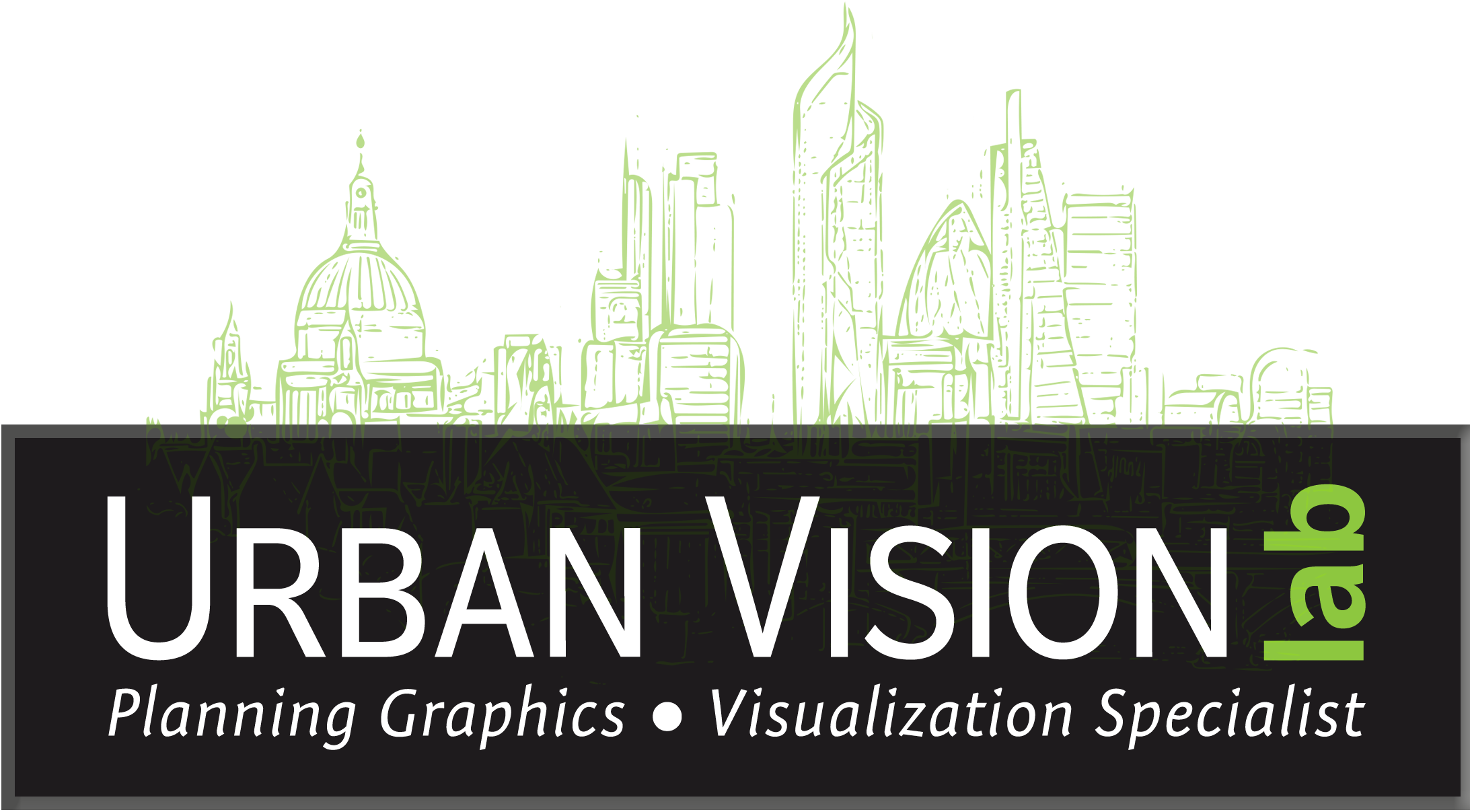Wasatch Choices 2040 – (Envision Utah, 2011-2012)
This project is the culmination of a regional visioning process involving multiple agencies and jurisdictions to explore how patterns of development impact long-term quality of life and economic development in the greater Salt Lake City, Utah metropolitan area.
Central to a successful public outreach campaign was the need for a concise, informative yet visually captivating vision map. Topics include the scope and general context, key areas of focus, goals and objectives, and the guiding principles.
This standard sized (8-1/2" x 11") full-color brochure provided a means to inform the public in a concise yet engaging and an easy-to-distribute format.
A 3D visual showing levels of intensity of possible future development. Intensity is represented through use of color and scale of repeating generic shapes.
Wasatch Canyons Tomorrow – (Envision Utah, 2009-2010)
This multi-jurisdictional project engaged the public in setting priorities and identifying long-term strategies to enhance and protect the value of the seven major canyons within the Wasatch Range located within the jurisdictional boundaries of Salt Lake County.
The Wasatch Canyons Tomorrow final report provides recommendations for projects, best management practices, and policies that will inform, but not supersede existing plans in the study area. In addition the report recaps the public involvement process and the input gathered through various workshops, open houses, and surveys.
Consistency in design, color, font, imagery, and presentation was critical. The amount of information to be presented required a simple yet captivating way to direct the reader to the appropriate chapter or content.
A selection of posters produced for public workshop events. These maps informed the public of the overall process in addition to providing an overview of key strategies and recommendations gathered in the areas of transportation, recreation, and land use.
Envision Cache Valley – (Envision Utah, 2007-2009)
This project began in response to shared concerns over regional growth projections and air quality issues in Cache County, Utah and Franklin County, Idaho. Research included current and projected population estimates, housing, employment, and market trends.
The final report provides a detailed summation of the process including a vision statement, underlying vision principles, scenario maps, projected consequences, and additional helpful resources.
Consistency in design, color, font, imagery, and presentation was critical. The breadth of information to be presented required a simple yet captivating way to direct the reader to the appropriate section or content.
Scenario development maps functioned as a visual aid, depicting both literal and conceptual ideas. In addition they provided
technical details and explanation of concepts.
Scenario development maps as found in the final report.
A "Tool Matrix" matched each of the six core vision principles with an appropriate solution. Visually, each principle was assigned a unique color "dot." These dots would assist the reader in finding the corresponding description for each tool within the chapter. Sections for each tool contained informative text, graphics, and additional external resources, both print and web.
Blueprint Jordan River – (Envision Utah, 2007-2009)
This project is the first comprehensive effort to develop a publicly supported plan of action or "vision" for the Jordan River corridor, from Utah Lake to the Great Salt Lake in Northern Utah. 15 municipalities and three counties were involved, including the participation of over 3,000 residents.
The final report provides a detailed summation of the process including background information, overview of the process, vision principles, scenario maps, action plans, and an implementation framework.
Due to the technical nature of the document, consistency in design, color, font selection, and layout was critical. A simple yet visually rich approach was employed to direct the reader to the appropriate content.
A challenge was consistency of look and clarity in message between large-format visuals used in public workshops and the same information presented in the final project report. Shown here is the "Recreation & Tourism Opportunities" map as found in the final report.
The three large-format "Opportunity Maps" as was used in the public workshop sessions. Each was 42" x 82".
Within the final report the sidebar area was utilized whenever possible to provide additional content.
As part of the public process a concise, informative and visually captivating vision map capturing the breadth and depth of the process was developed. Elements include the project's primary goals and objectives, general project focus area, key landmarks and points of interest, and basic physical and topographical features. A great deal of public input went into the creation of this map.
Close-ups of various sections of the Blueprint Jordan River vision map.
